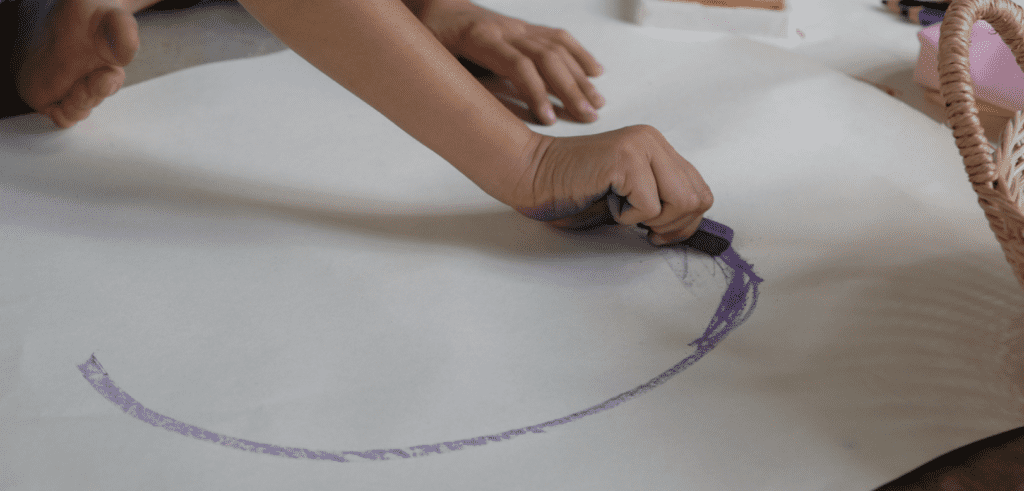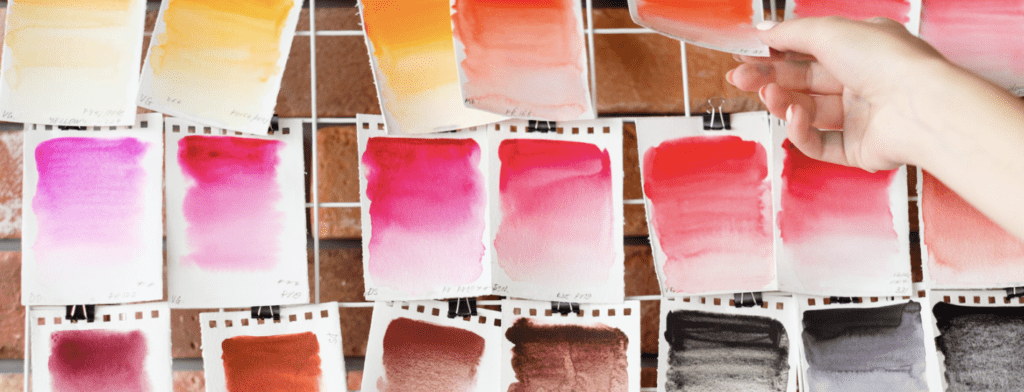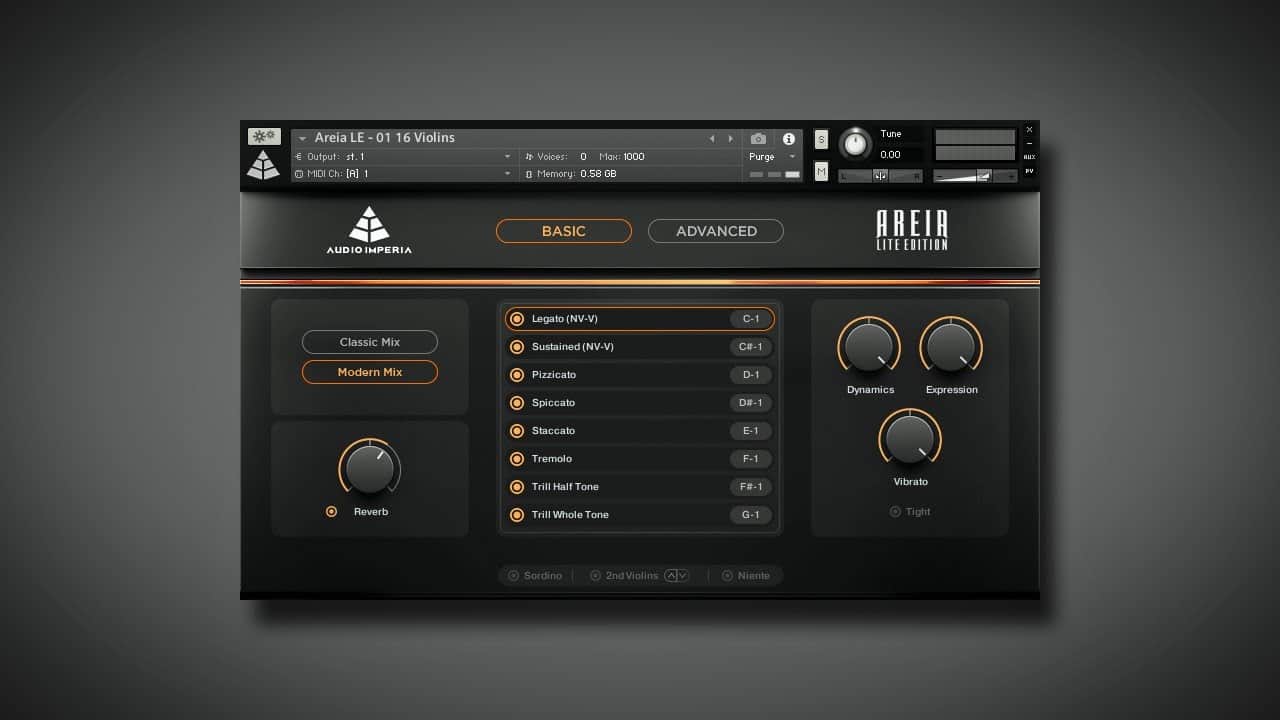Creativity is a skill that can be learned, but it takes time and dedication to develop. A creative practice is an important factor in developing creativity.
One way to start this creative practice is by giving your full sustained attention to each task or project you are working on. You might be surprised how often our attention wanders when we are supposed to be focusing on something.
We might get lost in our thoughts, or become distracted by outside stimuli. By training ourselves to focus exclusively on the task at hand, we can learn to control our attention and direct it towards more creative endeavors.
Additionally, this discipline will lead to a greater sense of satisfaction with our work. When we put our full effort into something, we are more likely to feel proud of the results. Therefore, giving our full attention to our work can be a powerful tool for increasing creativity and satisfaction.
Give Your Full Sustained Attention: The Value of a Creative Practice
Letting go is hard. So do it often and consistently. Locate where you’re falling short. We have been conditioned to believe that everything worth doing will result in failure.
The very fact that we are willing to recognize our own flaws and seek help shows the potential for change in our lives. Give yourself permission to make mistakes, because they may not be failures at all. They may be signposts, guiding you toward a new future no one else has considered. Keep going.
What Is Creative Practice?
A creative practice is an important factor in developing creativity. It can be anything from writing for a certain amount of time each day to painting or sculpting. The most important part is that it is something you do regularly to help you focus and develop your creative skills.

Examples of Creative Practice
Being creative and being artistic are often seen as one and the same, but there is a big difference between the two. Being creative simply means coming up with new ideas, while being artistic requires the ability to execute those ideas in a visually appealing way.
Many people are naturally creative, but it takes years of practice to develop the skills needed to be truly artistic. This is why so many artists view their work as a lifelong journey, always striving to improve their technique and push boundaries.
Whether you consider yourself creative or artistic, there is no denying that both require a significant amount of hard work. Creativity may come naturally to some people, but it can be learned by anyone willing to put the time and effort into developing their skills.
Give your full sustained attention: The Value of a Creative Practice
Developing this creative practice has been an invaluable reminder of one core technique that I believe applies to everything: if you love something, give your full sustained attention to it, and it will reward you in ways unimaginable.
One way to start this creative practice is by giving your full sustained attention to each task or project you are working on. This will increase your creativity and make you more satisfied with the work you do.
We have been conditioned to believe that everything worth doing will result in failure, but this is not true. Give yourself permission to make mistakes, because they may not be failures at all. They may be signposts, guiding you toward a new future no one else has considered. Keep going and never give up on your dreams.
As an artist, I am always seeking new ways to challenge myself and push my creativity. Recently, I decided to take up embroidery as a way to explore a different medium. At first, I was hesitant, as I am not particularly skilled with a needle and thread.
However, I quickly found that the process of embroidery is surprisingly soothing, and I loved the way that it allowed me to be precise and deliberate with my movements. As I continued to practice, I began to see a marked improvement in my skills. The more time and effort I put into it, the better the results became.
Developing this creative practice has been an invaluable reminder of one core technique that I believe applies to everything: if you love something, give your full sustained attention to it, and it will reward you in ways unimaginable.
How to try new things without fearing failure
We have been conditioned to believe that everything worth doing will result in failure. The very fact that we are willing to recognize our own flaws and seek help shows the potential for change in our lives.
Give yourself permission to make mistakes, because they may not be failures at all. They may be signposts, guiding you toward a new future no one else has considered. Keep going.
Permission to Fail
Creativity is a skill that can be learned, but it takes time and dedication to develop. A creative practice is an important factor in developing creativity.
One way to start this creative practice is by giving your full sustained attention to each task or project you are working on. This will not only increase your creativity but also give you more satisfaction with the work you are doing.
However, this takes courage. It means that we have to be willing to try new things even though we may fail. And failure is a scary thing. We have been conditioned to believe that if we don’t succeed at something, then we are failures.

This is not true! Failure is simply an opportunity for growth and learning. Each time we try something new and it doesn’t work out the way we wanted, we learn a little bit more about ourselves and what does or doesn’t work for us.
So don’t be afraid to try new things, because chances are you will stumble along the way but eventually find your footing. Just keep going!
Creativity can be learned by anyone willing to put the time and effort into developing their skills. A creative practice is an important factor in developing creativity.
Creative Practice – 10 Tips
- Give your full sustained attention to each task or project you are working on.
- Take time for yourself each day to do something you love.
- Draw inspiration from the things around you.
- Be open to new experiences and ideas.
- Don’t be afraid to try new things.
- Let go of perfectionism and embrace mistakes.
- Surround yourself with creative people.
- Set aside time each week to work on personal projects.
- Take classes or workshops in order to learn new techniques and skills.
- Use your imagination!
The Importance of Creative Practice for Professionals
Developing this creative practice has been an invaluable reminder of one core technique that I believe applies to everything: if you love something, give your full sustained attention to it, and it will reward you in ways unimaginable.
In our professional lives as well as our personal ones, we have so many demands on us from the people around us that sometimes forget why we got into what we do.
We lose sight of what truly makes us happy and satisfied with a job because there are always negative thoughts creeping up about how things aren’t going right or how someone might not like something.
This is where having a healthy work-life balance comes into play – giving yourself time each day for activities outside of work can help keep those thoughts at bay.
How to Write About Your Creative Practice
When it comes to writing about your creative practice, it can be helpful to think about the following:
- What does creativity mean to you?
- What does your creative practice involve?
- How has your creative practice changed or evolved over time?
- What benefits have you experienced as a result of your creative practice?

What Is Creative Practice in Research?
Creative practice in research is the process of developing new and innovative ideas through various methods of inquiry. It involves being open to new possibilities and exploring different options and avenues creatively.
It also includes being willing to try new things, embrace mistakes, and accept feedback. Additionally, creative practice in research requires discipline and dedication in order to achieve success.
How Can You Develop a Creative Practice in Research?
There are several ways that you can develop your creative practice in research.
First, you should set aside time each week to work on personal projects unrelated to your job or professional goals.
Second, take inspiration from the things around you and look at inspiring things which can help jump-start our own creative juices.
Third, surround yourself with like-minded individuals who share your passion for creativity so they can understand what you’re going through.
Lastly but most importantly, don’t be afraid to try new things! It’s okay if things don’t turn out the way we want them to – learning from mistakes is part of growing as an individual overall because it helps us grow personally and professionally.
What Are the Benefits of Creative Practice in Research?
Not only does practicing creativity allow us to grow as individuals but it also allows us to connect with other people on a deeper level because we are able to share our passion for creative expression and develop innovative ideas together.
Additionally, when we practice creativity regularly and take time out each week for personal projects, we tend to be happier overall in life because we know how important balance is between work/life and making time for self-care so that everything feels more manageable over time!
Overall, developing this creative habit can lead to various benefits including higher levels of happiness, improved critical thinking skills which can help improve academic performance overall (and get you grades!), greater job satisfaction if your passion is in a creative field, and an overall higher level of satisfaction with life.
What Are the Risks Associated With Creative Practice?
Even though there are many benefits associated with practicing creativity on a regular basis, it’s important to note that there can be some risks as well.
For example, too much time spent indulging in our hobbies may result in neglecting other areas of our lives such as family or work obligations which could lead to reduced performance at school or at your job if you’re working full-time while going to school part-time!
Additionally, not everyone will enjoy engaging in creative practice regularly because they may feel more comfortable pursuing their passion through something else like writing instead of painting for example – however you should challenge yourself to explore different activities regularly to see what you like and dislike about them!
Lastly, the risk of burnout is possible if we try too many new things at once because it can be difficult for us to balance our creative practices with other parts of life which may come up unexpectedly.
What Are the Benefits Associated With Creative Practice?
Creativity has numerous benefits. It helps develop critical thinking skills, improve one’s ability to communicate effectively through written word or visuals, and increases mindfulness which can help reduce stress levels over time as well as improve moods overall!
Additionally, creativity allows individuals not only to express themselves in various ways but also to help others experience their work by bringing joy into people’s lives on a larger scale than ever before – so there’s a sense of giving back to the community as well.
Lastly, pursuing creativity allows us to become more innovative and open-minded individuals, which are both qualities that many employers seek out when hiring new employees!
What Is Johnson Witehira Creative Practice?
Johnson Witehira is a Māori artist and carver from Rotorua, New Zealand. He specializes in traditional Māori woodcarving and whakairo (Māori carving), and his work often incorporates taonga puoro (traditional Māori musical instruments).

So What Are You Waiting For?
If you haven’t started developing your creative practice already, there’s no time like the present! It may be challenging at first but it’ll be worth it in the long run – not only will you see benefits for yourself but also for those around you who appreciate your work.
So start by setting aside some time each week to do something that relaxes you and makes you happy, whether that means painting, writing, dancing, or anything else that brings joy into your life. And don’t forget to document your progress along the way – it’ll be fun to look back on in years to come! 🙂
Conclusion
The article describes the benefits of practicing creativity regularly, citing examples of how it can help critical thinking skills, communication abilities, and mindfulness. It also notes that creativity allows individuals to express themselves in various ways and to help others experience their work. Finally, the article discusses Johnson Witehira, a Māori artist and carver who specializes in traditional Māori woodcarving and whakairo.
The article ends with a call to action, urging readers who haven’t already started developing their creative practice to do so. It advises them to set aside some time each week to do something that relaxes them and makes them happy. And finally, it reminds them to document their progress along the way. 🙂
Start Today
If you haven’t started developing your creative practice already, there’s no time like the present! It may be challenging at first but it’ll be worth it in the long run – not only will you see benefits for yourself but also for those around you who appreciate your work. So start by setting aside some time each week to do something that relaxes you and makes you happy. And be sure to document your progress along the way! 🙂
Value of a Creative Practice FAQs
How much time should I set aside for my creative practice?
It depends on how often you want to engage in your creative practice. If you’re just starting out, we recommend setting aside at least 30 minutes each week. But as you get more comfortable with the activity, you can increase the amount of time you spend on it!
What are some examples of creative practices?
Creative practices can include painting, writing, dancing, photography, and many other activities! It really depends on what you enjoy doing and what brings joy into your life.
How can I document my progress?
There are many ways to document your progress, such as keeping a journal, starting a blog, or even creating a scrapbook! It’s up to you to decide what works best for you. 🙂
What is a creative practice?
It is the deliberate practice of developing, mastering, and employing the capabilities (craft, technical, artistic, intellectual and creative) that go into the creation of our creative work.
How do you develop a creative practice?
Here are the five things that helped me start:
Set a time limit, and make it as short as possible. Start with tiny daily doses of whimsy.
Make it a habit to do things for the sake of the process rather than for an expected result. Make it enjoyable, not stressful. Simply Do It!…
Make the occasion memorable by making a point of it. Make it seem unique.
Make a promise for your practice.
Make a note of your favorite ideas.
Why is creative practice important?
What is the significance of creativity for your mental health and well-being? Those of us who engage in creative work has a firm and entrenched belief that creativity is so essential to who we are that we would fall physically, emotionally, mentally, and spiritually if it were taken away.
How can I be creative in art?
There are many ways to be creative in art, but it really depends on what you enjoy doing and what brings joy into your life. You could try painting, writing, dancing, photography, or any other activity that allows you to express yourself creatively. Be sure to set aside some time each week to do something that relaxes you and makes you happy, and document your progress along the way!
How can I be creative in my work?
There is no one answer to these questions – it really depends on what you enjoy doing and what brings joy into your life. However, some tips that may help you get started include setting aside some time each week to do something that relaxes you and makes you happy, documenting your progress along the way, and trying to see things from a different perspective. 🙂
What are the benefits of creativity?
Some benefits of creativity include improved communication skills, critical thinking abilities, and mindfulness. Additionally, creativity allows individuals to express themselves in various ways and to help others experience their work. Finally, creativity can be a source of enjoyment for both the creator and the viewer.
How much time should I set aside for my creative practice?
It depends on how often you want to engage in your creative practice. If you’re just starting out, we recommend setting aside at least 30 minutes each week. But as you get more comfortable with the activity, you can increase the amount of time you spend on it!
What are some examples of creative practices?
Creative practices can include painting, writing, dancing, photography, and many other activities! It really depends on what you enjoy doing and what brings joy into your life.
What is the significance of creativity for your mental health and well-being?
Creativity has been shown to improve communication skills, critical thinking abilities, mindfulness, and overall mental health. Additionally, creativity allows individuals to express themselves in various ways and to help others experience their work.










